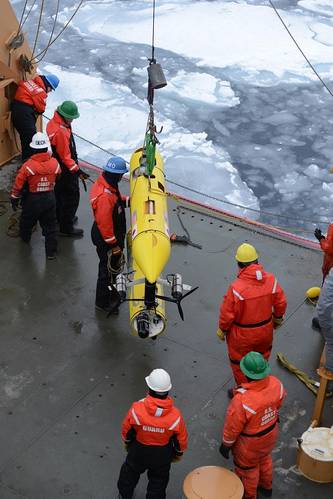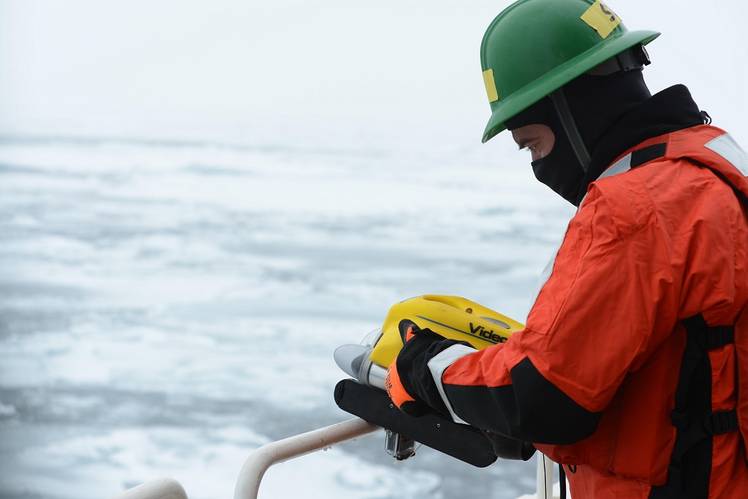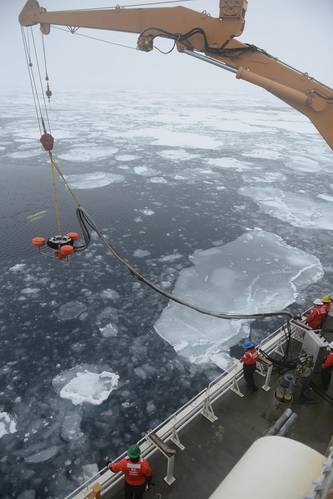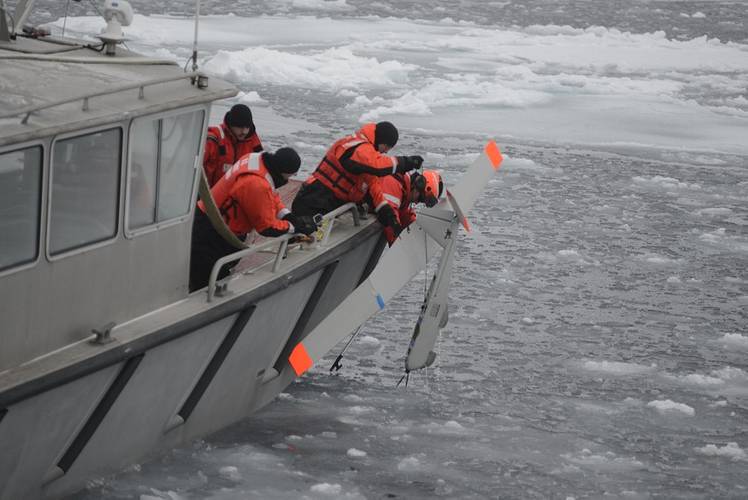Coast Guard, Partners Complete Arctic Oil Recovery Exercise
Members of the Coast Guard Research and Development Center, under the guidance of the Coast Guard’s recently released Arctic Strategy, worked with partner federal agencies and scientific organizations to successfully complete a simulated spilled oil response and recovery exercise aboard the Coast Guard Cutter Healy on the Arctic ice field Tuesday.
The exercise involved air, surface and underwater assets to simulate the detection and recovery of oil from ice-strewn water.
Assets included small unmanned aircraft systems from the National Oceanic and Atmospheric Administration and the University of Alaska – Fairbanks, a Coast Guard Pacific Strike Team oil skimmer, a Research and Development Center remote-operated underwater vehicle, a Woods Hole Oceanographic Institute unmanned underwater vehicle and drifting buoy funded by the Bureau of Safety and Environmental Enforcement.
The test flights of the two SUAS systems were the first ever in the Arctic Ocean.
“We conducted this inter-agency exercise with our partners to assess the potential for these technologies to enhance the Coast Guard’s capability to respond to an oil spill in the icy waters of the Arctic,” said Rich Hansen, the chief scientist for the exercise and an engineer with the Research and Development Center. “Through inter-agency cooperation and teamwork we accomplished all our goals and gathered data to move forward in our mission as stewards of the pristine Arctic environment.”
The crew of the Healy is deployed to the Beaufort Sea as part of the Coast Guard’s Arctic Shield 2013 mission.
Units, agencies and organizations involved in the exercise include: the Coast Guard Cutter Healy, the Coast Guard Research and Development Center, the Coast Guard’s National, Gulf, Atlantic and Pacific Strike Teams, Coast Guard Headquarters, Pacific Area and 17th District, NOAA, WHOI, BSEE, UAF and the Department of Homeland Security Maritime Center of Excellence.
uscg.mil




















